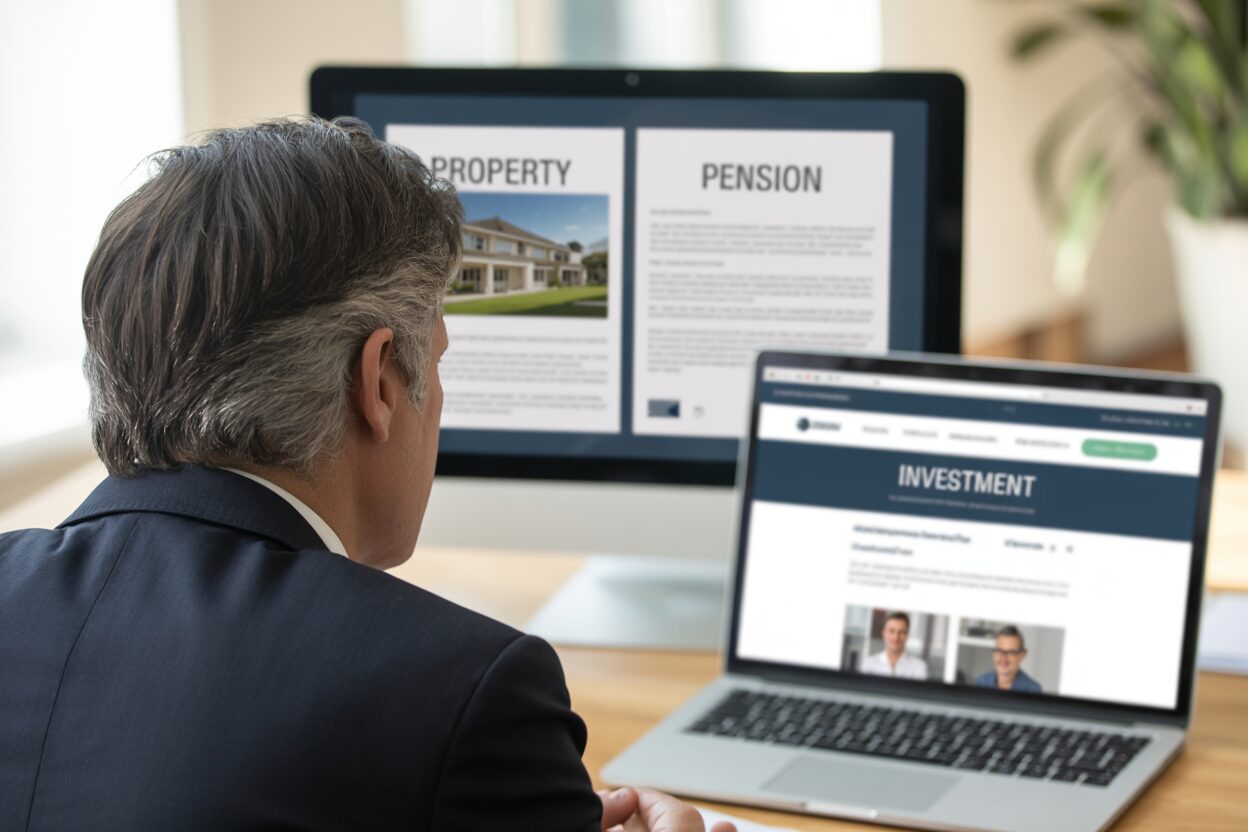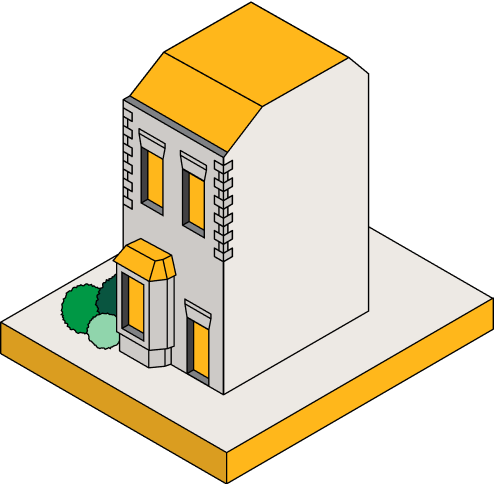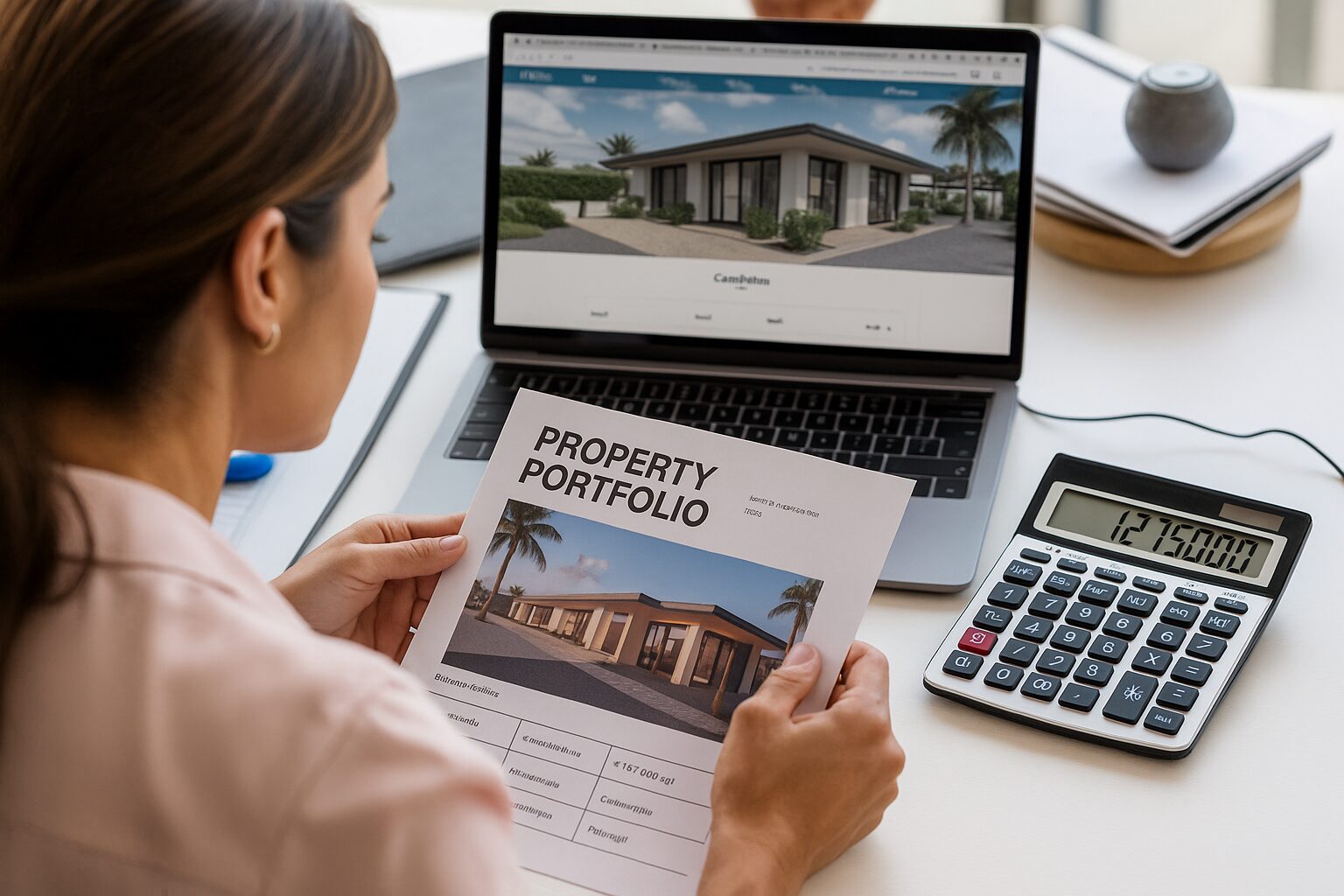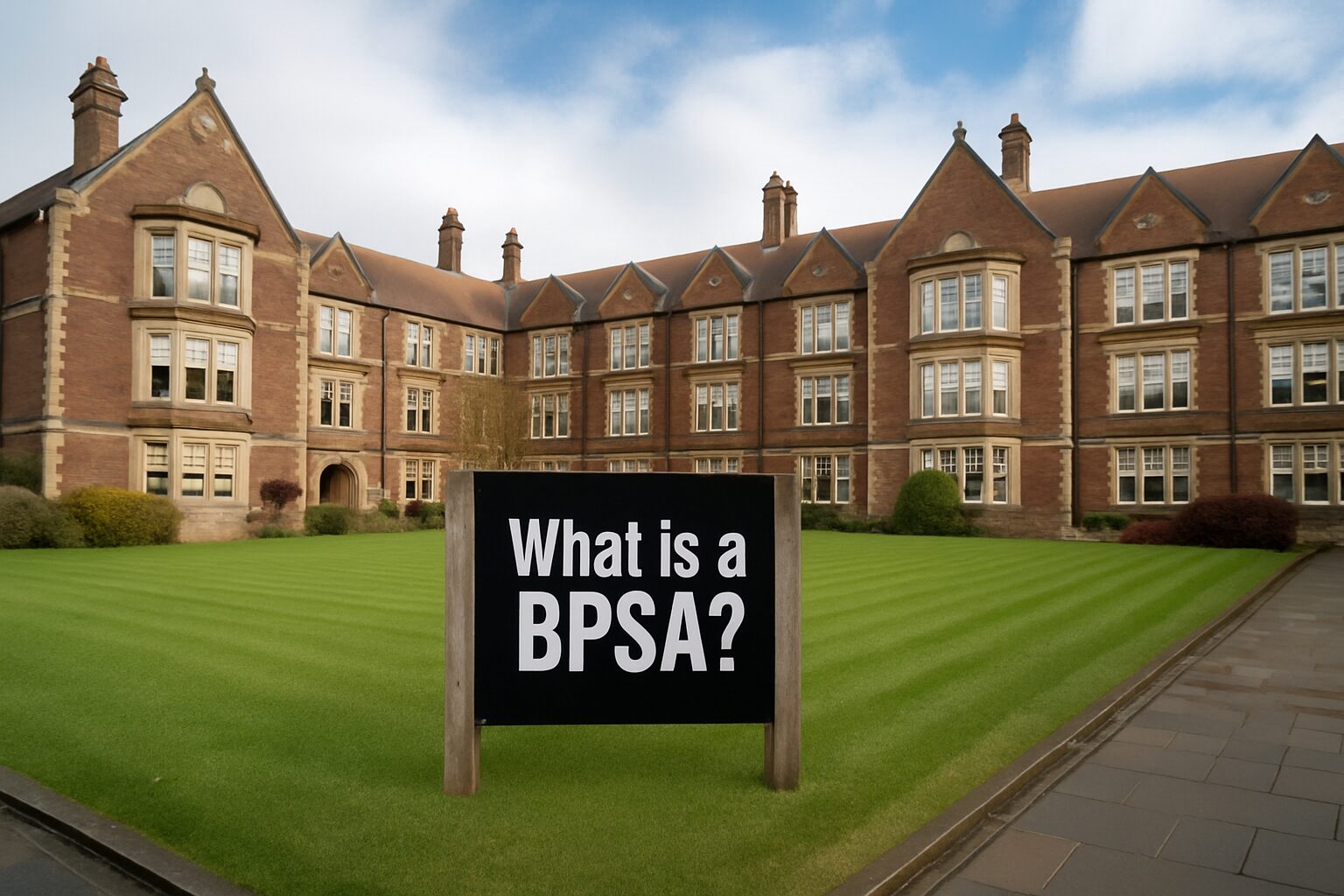
When many people think ahead to their retirement, they consider two investment choices: either a pension or a property portfolio. Each route has its own rules, rewards and trade-offs. Which is right for you depends on how much money you can invest, how much time you have and your appetite for risk.
In this article, you’ll learn about investing in property and pensions. You’ll discover how pensions target rising asset prices and dividends while property targets rising property prices and rental yield. That’s followed by two worked examples of how a pension and a property portfolio might grow over a 30 year timespan.
HMO Architects note: We are not financial or pension advisors. Do not take the contents of this article as a reason to act or not act. Please do your own research and seek professional advice from a financial adviser.
Buy property or pension: what is best for retirement?
Here are the 11 main differences between pension and property investing:
| Pension | Property (BTL/HMO) | |
| Vehicle | Pension schemes: Holds assets like shares, bonds and funds for you in a personal pension fund. | One or more investment properties (like buy to let properties) you own. |
| Barrier to entry | Very low – can start from a few pounds a month by direct debit | Very high – you require a substantial deposit and access, in many cases, to bridge loans and development finance |
| How you pay in | You make regular payments into a personal pension plan. With workplace pensions, you get to a top up from employer contributions. | You save up a deposit and then arrange finance to buy property. |
| What drives growth | Growth in the value of the assets and compounding. Compounding is reinvesting your returns so you earn returns on them. | Income received from rental payments and growth in the value of your property investments. |
| Access and withdrawal | Subject to retirement age thresholds (currently normal minimum pension age is 55, rising to 57 from 6 April 2028). You can take a lump sum when you start benefits. | You can access cash now from rental income or by selling your properties. Most reinvest rental income and leverage equity to grow their portfolio. |
| Income in retirement | Use flexi-access drawdown for variable payments or buy an annuity for guaranteed income. | Letting can provide a steady income stream. This is subject to disruption by voids. |
| Tax at a glance | Withdrawals are subject to income tax at your rate. (25% of eligible funds can usually be taken tax-free up to the Lump Sum Allowance (LSA) of £268,275, with overall tax-free death-and-lump-sum payments limited by the Lump Sum and Death Benefit Allowance (LSDBA), usually £1,073,100.) | Rental profit is taxable although you can reduce tax with allowable costs. Selling property may attract Capital Gains Tax. |
| Liquidity | Very quick disposal thanks to large and liquid units and funds market. | Property sales can take months and incurs a variety of costs. |
| Fees & control | Low admin fees plus platform and fund fees in some cases. Default workplace pension “charge cap” is 0.75% a year on the default fund (many are lower). | Mortgage and compliance costs. More admin needed unless you had a manager which eats into profits. |
| Management load | Largely hands-off. | Hands-on unless you hire an agent. |
| Who it suits | You want a simple set-up and access to a broad range of investment opportunities. | You want more control over your retirement income and the ability to influence returns. Owning tangible assets is also important to you. |
The pension route
Growth in a pension comes from:
- Increases in the value of the assets you hold (including dividend payments from shares)
- Compound interest, where the pension fund invests the profits you’ve made back into your investment pool
Your pension provider charges you for their service. Workplace funds have a cap of 0.75% per year but many are lower. You can invest in pension schemes from as little as a few pounds per month.
Tax benefits
Pension contributions benefit from significant tax benefits. Be careful, because those benefits fall as your income goes up.
- Tax relief: You get tax relief on pension contributions up to the annual allowance. If you put in £80, your provider claims £20 so £100 goes into your pension pot. That 20% is automatic in “relief at source” schemes. If you pay 40% or 45% tax, you claim the extra back from HMRC or through your tax return. Watch out though, HMRC has “lowered the threshold” for investigating pension relief claims from higher/additional-rate tax payers. From 1 September 2025 HMRC requires evidence for most PAYE higher/additional-rate relief claims and no longer accepts telephone claims; use the online service or post.
- Annual allowance: For most people the annual allowance is £60,000 a year (or 100% of UK earnings if you earn less). You can usually carry forward any unused allowance from the last three tax years. If your “adjusted income” is over £260,000, your allowance tapers down by £1 for each £2 over. The minimum is £10,000. Adjusted income is your total taxable income plus the value of certain pension contributions made by your employer.
Drawing down your money
There are penalties for withdrawing from your pension savings up until a certain point. After that, how much you withdraw is up to you, but it affects your tax bill and whether the Money Purchase Annual Allowance applies (more on that below the bullets).
- Earliest date: The Normal Minimum Pension Age is 55 today. This is when pension savers can access their funds without being subject to an unauthorised payments tax charge. That charge is 40%, plus a possible 15% surcharge (making an effective 55%). The age rises to 57 on 6 April 2028 except for armed forces, police and fire service members.
- What you can take out: You can usually take up to 25% of your pot tax-free. But there’s a lifetime cap called the Lump Sum Allowance of £268,275 across all pensions. HMRC taxes anything above that at your income tax rate.
- Ongoing income: The two main methods of taking money out of your pension are an annuity and flexi-access drawdown. If you want a guaranteed income for life, choose an annuity. If you want to get to your money when you need it and stay invested, choose flexi-access drawdown. Any withdrawals you take above your 25% tax-free allowance counts as taxable income.
The Money Purchase Annual Allowance (MPAA) only applies to defined pension contributions. Once you take any taxable money from the pot, the most you can pay into pensions with tax relief falls to £10,000 a year. This limit applies from that point in the tax year and in future years. This catches people out so let’s look at an example.
The following can trigger the MPAA tax rule:
- Taxable drawdown income: You move funds into flexi-access drawdown and take £200 a month as pension income. That £200 is taxable, so the MPAA applies.
- Whole-pot withdrawal: You take out a £30,000 pension pot in one go. £7,500 (25%) is tax-free and £22,500 is taxable. From then on, the cap on your tax-relieved pension payments is £10,000 a year.
- Lump-sum withdrawal: You take £20,000 straight from your pot. £5,000 is tax-free (25%) and £15,000 is taxable. In this case, MPAA applies.
If you trigger MPAA and save more than £10,000 into pensions in that tax year, HMRC will claw back the tax relief on the excess. They do this by charging you income tax at your normal rate – either 20%, 40% or 45%.
On death
From 6 April 2027 (deaths on or after this date), most unused pension funds and pension death benefits will count in your estate for inheritance tax (IHT).
Today, many pension pots sit outside IHT if trustees have discretion over who gets the money. This means that they decide who receives your pension death benefits after you die. Your “expression of wish” with your pension provider guides their decision-making but it doesn’t bind them. After the change, the default changes for most pots and death benefits, with a few exceptions.
“Unused” means money you haven’t taken before you die. That includes:
- Uncrystallised funds (pension money you haven’t started using, in other words you’ve taken no lump sum, drawdown or annuity)
- Cash still in drawdown (money moved into drawdown that you hadn’t yet withdrawn)
- Most death benefits paid from those funds (for example, a lump-sum payout, beneficiary drawdown, or a beneficiary’s annuity).
Separately, beneficiaries may still pay income tax if lump sums go over the Lump Sum and Death Benefit Allowance (LSDBA). LSBDA is the total cap on tax-free lump sums paid in life and on death. It’s usually £1,073,100 but can be higher in certain circumstances. HMRC taxes the recipient anything above that. LSBDA is different from IHT.
Your executors (personal representatives) will handle any IHT on pension amounts. Some benefits stay outside IHT, such as death-in-service payments, most dependants’ scheme pensions, and joint-life annuities.
To prepare for this:
- Keep your expression of wish up to date
- Ask your provider how your scheme would pay on death (lump sum, beneficiary drawdown, or annuity)
- Work out whether the total of your pension pot and other assets could create an IHT bill
The property market route
Investing in property is buying an income stream and an opportunity for capital growth. Unlike with pensions, you won’t benefit from tax relief if you choose this option. The tax treatment of property investment is, in contrast, much more complex. Different types of taxes apply at different stages.
Investing in residential property and commercial property also requires:
- Significant upfront access to capital
- A good credit score if you want to borrow to renovate and improve a property as well as buy it
Fees apply at every stage. For example, you’ll need to pay legal fees when buying a property. Letting agent fees apply if you want a professional to find tenants and manage the property.
It’s an expensive business but there are over four million rental homes in the UK. Being a landlord is a popular alternative to retirement savings. Below, we find out why.
For the purposes of this blog post, we’re assuming you will buy a property and hold onto it. Your goal is to pay yourself from tenants’ rental income to fund your retirement. We also assume that you purchase as a private individual and not as a limited company.
Taxation
Paying tax is an occupational hazard when you invest in the UK property market. Examples of tax you’ll pay:
- On purchase: You pay Stamp Duty Land Tax (SDLT) at a higher rate. For example, if you bought a £350,000 to live in, SDLT would cost £7,500. If you’re buying it to rent out, you’ll pay £25,000. Different rates apply in Scotland and Wales.
- On disposal: You pay tax on the profit you make from owning a property as an asset. To work this out, take the sale price of the property and subtract the buy price, any money spent improving the property and associated sale fees. Capital Gains Tax implications have improved recently with the rate dropping from 28% to 24%. For basic rate tax payers, the charge is 18%. You need to report the sale and pay the fee within 60 days of the sale.
Earning income from your property
Landlords pay income tax on rental profits at their marginal rate (20%, 40% or 45%). There are allowances you can claim to reduce your tax bill:
- 20% mortgage tax relief: You can’t claim the entire mortgage interest back. This does lead to situations where you make a cash loss on a property but HMRC classifies it as a taxable profit. You put your rental property figures on your Self Assessment (SA105) and pay tax on the profit.
- Tax-free allowance: You don’t have to tell HMRC if you make less than £1,000 in gross property income. If you earn over £1,000 up to £2,500, you must let HMRC know. Anything over £2,500, you need to register for Self Assessment.
- Other allowances: You can claim costs that are “wholly and exclusively for the purposes of renting out the property.” This includes general maintenance, insurance, council tax, legal fees, accounting fees and so on.
On death
Any rental property you own is part of your estate for Inheritance Tax purposes. Everyone gets:
- £325,000 nil-rate band (assets, cash and so on under this limit do not attract tax)
- £175,000 residence nil-rate band (RNRB) (for properties you lived in that you can pass to direct descendants)
The RNRB tapers away if the value of your estate exceeds £2,000,000. A buy-to-let that you never lived in doesn’t qualify for RNRB.
Investing over the long term
On the face of it, the tax advantages of pensions seem to make them a far better option. But, over a 30-year horizon, buying residential property and commercial property adds up, if you have enough capital to begin with.
Pension investing
Example: You are a 30-year-old higher-rate taxpayer and you start a pension. Your initial payments are £240 a month, bumped up by 20% by your provider. You reclaim another £60 a month via Self Assessment (the extra 20%).
Every year after fees, your pension pot grows by 4.5%. After 30 years, you’ve paid in around £116,000 and your pot, with HMRC reliefs and reclaims, stands at around £284,200.
From the age of 57, you could take a tax-free lump sum of £71,047. With the remaining £213,141, you could buy an annuity.
At a rate of £6,663 per £100,000 in your annuity, that’s an annual gross of £14,202 a year. If you’re still a higher-rate taxpayer when receiving annuity income, you’d receive £8,521 (40%). If you had no other income, you’d receive £13,875. That’s after your Personal Allowance and an Income Tax payment of £326.
An alternative financial future is not taking a lump sum at all and retiring at 65. By then, your pension pot would have grown to £404,114. Assuming annuities at the same rate, you’d receive £26,926 a year gross. If you have no other income, your £12,570 personal allowance means only £14,356 is taxed at 20%, so you’d keep £24,055 a year. If you’re still a higher-rate taxpayer, assume 40% on the lot: you’d keep £16,156 a year.
Beware: It’s worth noting that markets can drop when you need the income. Let’s say you have a pension fund of £300,000 and you take out 25% tax free. You annuitise the £225,000 at £14,992 a year. But if markets drop by 20% before you buy the annuity, that £225,000 drops to £180,000 and your annuity falls to £11,993 a year. You’d need the assets to rise 25% to get back to £14,992 a year.
HMO Architects note: Many pension providers offer investment in REITS. REITs give investors access to the property market without requiring them to own any physical properties themselves.
Property investing
Example: Your goal is to build up a six property portfolio in 30 years. You buy the first for £200,000 with a 75% LTV interest-only mortgage at 5.5% over 5-year fixes rolled, meaning you have a £50,000 deposit. You also have enough to pay for the £11,500 stamp duty, £10,000 for renovations and £2,000 in legal and other costs. You hold the properties in a simple SPV company so loan interest is deductible and profits are taxed at corporation-tax rates.
You aim for a 10% gross rental yield and you allow 340% for running costs such as management, safety checks, maintenance, licences and voids. On your first property, that’s:
- £20,000 gross rent
- £12,000 profit before finance and tax (NOI)
- £8,250 interest
- Company profit £3,750
- Corporation tax £713
- Post-tax cash £3,040 a year
You bank any surplus to help fund the next deposit (in this case, £3,040 in the first year)t. You increase rents 2.5% a year and assume property values rise 2.5% a year.
In year 5, you use those rental savings along with other savings to buy a second property, now costing 13% more than the first. You run it on the same basis. In years 10, 15, 20 and 25, you repeat the pattern, each time buying the next property and applying the same rent and cost assumptions.
By the end of year 30, you’ve outlayed a grand total of £417,618 in deposits and £109,259 in stamp duty (plus £12,000 legals and £60,000 renovations). But now your portfolio:
- Has a gross value of £2,517,081
- Outstanding mortgages of £1,252,853
- Equity of £1,264,228
So, in year 30, your company would take in £251,708 in gross rent, paying out £100,683 in running costs leaving it with a NOI of £151,025. From that, subtract £68,907 interest leaving £82,118 profit before Corporation Tax and £64,107 after tax.
There will be tax on wages and dividends to pay as well, depending on how much you withdraw and the thresholds at the time.
If you took it all as dividends and had no other income, you’d keep about £56,300 after personal tax (2025/26 rates), versus £24,055 in the pension example.
Invest to suit your individual circumstances and financial goals
Both property investing and pensions can both deliver impressive investment growth. Pensions are one of the most tax efficient ways to save for retirement. You can work with financial advisors to choose a portfolio of assets to match your risk tolerance.
Purchasing property to rent out is heavily taxed and, like pensions, prone to market risk. It doesn’t offer the tax free growth pensions offer. A rise in interest rates can wipe out your profits. Ongoing costs are much higher, too.
However, get it right and you benefit from passive income from day one and equity appreciation through property price rises.
Stress-test both routes against your actual and projected living costs, not just the headline returns they may deliver. Speak with a financial expert about your personal circumstances before making a decision.
What is a self invested personal pension?
One popular alternative investment option for pension building is the self invested personal pension (SIPP). A SIPP is an investment vehicle you have much greater control over. As well as stock and shares, you can invest in property and land. However, you can not buy residential property or land – the scheme is open to only commercial property and land. This may also include properties like supported and assisted living HMOs. Ask your financial advisor for guidance. [Related article: How to Invest in Property Through Your Pension Fund]
HMO Architects: partners in property portfolio growth
For hundreds of thousands of Britons, property investment is how they intend to pay for their and their family’s futures. Sometimes, it’s multigenerational with its initial use being to pay for retirement and later use as a nest egg for their children. If, after speaking with an expert, you’re happy with the financial and tax implications of being a landlord, come to us.
Our Investment Director, Ryan Windsor, started building his own extensive property portfolio when he was 17. Ask him how he did it using his buy-refurbish-refinance-rent (BRRR) model to get inspiration for your own portfolio.
Our Architecture Director, Giovanni Patania, formerly of Foster + Partners, is an expert in value engineering. He balances making your buy-to-let, HMO or holiday cottage appealing to your target audience with keeping build and running costs under control so your project stays profitable.
To show you why we believe in the power of property investing, here are three recent stand-out case studies for clients:
- Beaufort Ave, London (4 units): We re-planned a simple three-bed terrace into a four-bed HMO with no extensions or en-suites, lifted the EPC to C, and created a low-risk, first-deal-friendly asset. Property value went up from £550,000 to £900,000 and rent from £1,400 to £5,600 pcm.
- Whippendel Road, London (7 units): We took a family home to a seven-bed Sui Generis HMO with en-suites under a permitted development-led strategy, securing swift sign-off from the council. Result: property value rose from £550,000 to £850,000 and the rent went from £1,400 pcm to £5,250.
- Mill Street, Birmingham (11 units): We converted a quirky conservation-area building into 11 self-contained flats, resolving heritage and services constraints along the way with the council. The value of the property and rental more than triped: £800,000 to £260,000 and £5,000pcm to £18,000 respectively.
We work with developers and investors from start-to-finish, offering services like:
- Investment strategy call: Benefit from the experience Ryan has gained on over 2,200 projects. Ask him about our portfolio building service and joint venture opportunities.
- Feasibility study: An expert-led breakdown of your pre-buy and design renovation options for just £197+VAT. Comprehensive scheme viability reports available.
- Planning permission experts: Our planning team have secured a 97% success rate across over 200 councils.
- Interior design and exterior planning: Our architects balance investment-led design with tenant appeal to maximise your yield and minimise void periods.
- On-site management: We can be your Building Regulations Principal Designer (where required) so your project stays on track and compliant.
View our range of development finance case studies to see how we’ve helped clients turn their ideas into sound investments. Read customer stories on HMO, flat, holiday let and housing projects.
Call our experienced team on 01223 776 997 or email us.
Ryan Windsor, Development Director and co-founder of HMO Architect, brings over 15 years of specialised experience in HMO development to the table. Having consulted on nearly 2,200 projects, Ryan is a highly seasoned HMO landlord with a vast and influential property network. He began his real estate journey at just 17, rapidly amassing a wealth of experience that sets him apart in the industry. Beyond his professional successes, Ryan is passionately dedicated to giving back, leading numerous charitable initiatives that make a meaningful impact on local communities.




